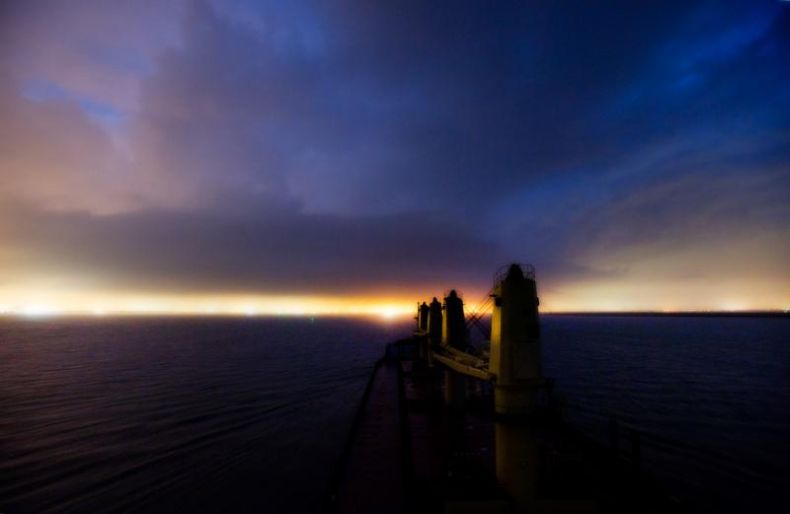|
|
Ship Vessel View
|
When the vessel exceeds a speed/length ratio of 0.94, it starts to outrun most of its bow wave, and the hull actually settles slightly in the water as it is now only supported by two wave peaks. As the vessel exceeds a speed/length ratio of 1.34, the hull speed, the wavelength is now longer than the hull, and the stern is no longer supported by the wake, causing the stern to squat, and the bow rise. The hull is now starting to climb its own bow wave, and resistance begins to increase at a very high rate. While it is possible to drive a displacement hull faster than a speed/length ratio of 1.34, it is prohibitively expensive to do so. Most large vessels operate at speed/length ratios well below that level, at speed/length ratios of under 1.0.
For large projects with adequate funding, hydrodynamic resistance can be tested experimentally in a hull testing pool or using tools of computational fluid dynamics.
Vessels are also subject to ocean surface waves and sea swell as well as effects of wind and weather. These movements can be stressful for passengers and equipment, and must be controlled if possible. The rolling movement can be controlled, to an extent, by ballasting or by devices such as fin stabilizers. Pitching movement is more difficult to limit and can be dangerous if the bow submerges in the waves, a phenomenon called pounding. Sometimes, ships must change course or speed to stop violent rolling or pitching.
|
|









